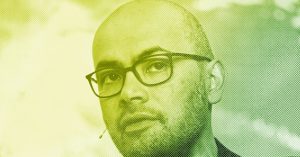Impact investing has evolved significantly in the last year, with more companies entering the market to support the segment and more family offices re-evaluating their approach, moving away from the outdated perceptions of impact investing not needing to deliver returns on par with other investment categories.
As wealth moves to a new generation of custodians, investment allocated to deliver social and environmental returns alongside financial ones increases, with the market surpassing the trillion US dollar mark and much discussion focused on reaching ‘the next trillion’ as rapidly as possible.
But it’s not only about the next generation – even though the next gen are the ones leading the fight here. At the recent GIIN Impact Forum, held in Copenhagen several investors weighed in on the discussion. Geraldine Leegwater, CIO at PGGM framed it nicely, “It’s not only about pensioners having enough money to retire with, but also a liveable world to retire to.”
In Simple’s latest review on sustainable and impact investing from a family office perspective, it’s easy to see how the industry continues to gather momentum within the family office ecosystem and how family offices are well-suited to shape its future.
A Proven Entity
With almost 20 years passed since the phrase ESG was coined, impact investing is no longer in its infancy and has proven viability and profitability. In doing so it has grown the number of stakeholders, from industry frameworks and networks to the investors themselves, and today’s ecosystem is stronger than ever.
The knowledge and resources available for family offices looking to enter or scale their impact investments also grows, as does the number of structured global communities. Membership organizations play a role in both education and supporting peers. Organizations such as Toniic, with their network of family offices and Ultra-High-Net-Worth Individuals that gather to support and inspire each other on impact investing, as well as AVPN, which aims to build the ecosystem in Asia, are two amongst a growing number of community-focused platforms dedicated to mobilizing impact-focused capital.
Embrace of Impact Technology
The saying ‘every company is a tech company’ rings equally true across the impact investment sector. Emerging technologies are allowing more streamlined processes and enhanced data analytics capabilities, many companies are using artificial intelligence to dramatically increase the efficiency with which investors can gather insights. But beyond the normal ESG data provider platforms, new tools are also starting to make inroads. Giving Place is one such a platform that despite its name goes beyond philanthropy and helps define values-based strategies that could be used for both impact investing and philanthropic giving to help family offices optimize their impact initiatives and also connect with emerging impact investment opportunities that match their values.
Emphasis on Measurement and Transparency
Technology is also crucial when it comes to ensuring accurate and reliable measurements to enable transparency across the sector. Much of this is also related to curbing greenwashing and ensure investments genuinely do deliver the environmental, social and governance returns that attracted investors to support them. As Robert Sturgeon from Ontario Teachers Pension Plan said at the ‘23 GIIN Forum, “Impact measurement is the cure to the politicization of ESG investments.”
An increasing number of companies are servicing this need, providing impact and ESG data analysis and reporting tools within an offering that aims to support family offices in their impact investment decision-making process and at the same time. MSCI, Sustainalytics, Matter and more provides a host of analytics solutions, also adding credibility to the sector.
Diversification is Key
With the asset class maturing, family offices also seek to diversify their impact portfolios, a strategy that allows them to allocate funds to a broader range of initiatives. While this diversification mitigates risks and allows them to explore more avenues, it also adds more layers to what has become an increasingly complex space, which is where the support communities and measurement tools become even more important.
The education of larger institutions is also critical, something the Center for Sustainable Finance and Private Wealth provides through its application of academic research that helps align private banking professionals and wealth owners in their efforts to maximize impact.
Aligning with Family Values
Diversification across the asset class also enables family offices to connect with focused investment opportunities that fit directly with their interests and values. Family offices have more flexibility than most investment entities to adapt their strategies to a value-aligned approach that can strengthen family legacy beyond individual generations.
Aligning investment to values don’t need to start with new ways of investing, an easy entry point is aligning existing portfolios to what matters to a particular investor. Ethic is a company enabling this through its creation of custom portfolios for both individuals and family offices that include impact metrics, a collection of data and insights tied to the issues the family is focused on, allowing them to track their impact over time.
The Future is Bigger Than Us
Looking ahead, the growth in impact investing shows no signs of slowing down. Family offices and their patient capital are perfectly positioned to lead its advance and simultaneously invest in new technologies and solutions that can help steer its trajectory. Aligning wealth management with ethical convictions is no longer something that sounds good, but has become imperative to everyone with the means to get involved.
After all, doesn’t a summer in which records were set for the hottest temperatures in our recorded history seems like a natural call to action, that over the next year we should seek to break records for how much we allocate towards investments that can ensure the long-term sustainability of our planet?
Read the full article here










